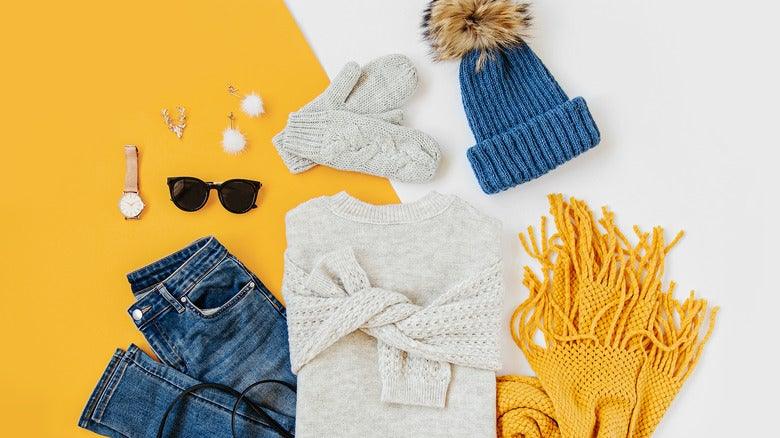When you want everyone on the same page, get them all in the same shirt. Whether you’re printing shirts for a company anniversary or for an annual departmental team-building exercise, matching one another helps solidify that feeling of togetherness that’s so necessary for teams to function effectively. illcurrency PRODUCTS
But how do you choose the right shirt for the right occasion? It may seem like a straightforward process, but there are a lot of moving pieces when it comes to selecting and ordering custom t-shirts. We’re here to walk you through it, with tips for making the right selections every step of the way.
Step 1: Choose the right fabric
When creating a custom t-shirt, the first step is to select the material you want for your shirts. There are a ton of choices for fabric out there, so get to know the differences between them and select the type that’s right for your needs.
For instance, tri-blend t-shirts are a combination of polyester, ring-spun cotton, and rayon. They’re composed of a comfortable and durable fabric blend that lends itself to a flattering fit, no matter what the cut.
Step 2: Get the proper fit
Once you’ve chosen the material you’d like to work with, the next step is to select the right cut. Once again, you’ll find there are a lot of options to choose from out there, so familiarize yourself with the various fits available and pick the one that works best for your needs.
If you’re looking to outfit both men and women in custom t-shirts, you’ll want to select a unisex tee that will flatter all types of figures, or be cognizant of how many t-shirts you’ll need in both men’s and women’s fits.
Step 3: Design your custom t-shirt
This step may seem overly simplistic, but it’s important to match the right design for the right audience. The more personalized the t-shirt feels in fit, fabric, and design, the more appreciation the recipient will have for it, so don’t just slap your logo on it and call it done. Give it careful thought and consideration, and you’ll see a real return on your investment.
There are lots of design decisions to consider. Start by thinking about what you’re hoping to achieve and what you want your shirt to say. Do you want it to be playful or serious? Edgy or conservative? Do you want illustration, text or both? Also, consider things like style, imagery, typography and color.
Creating an amazing t-shirt design isn’t easy, so it’s a good idea to enlist the assistance of a professional and hire a t-shirt designer to create a unique, custom design for you.
Step 4: Upload your design and order your t-shirts
Once you’ve developed or selected a carefully thought-out design for your custom t-shirts, it’s time to upload it and order the quantity of shirts needed. The easiest way is to use a t-shirt printing service from us. Be sure to carefully consider the available color choices as well, so the color (or colors) you select complements and doesn’t contrast with your design.
Once you’ve selected the right t-shirt in the right color, upload your designs for the front, as well as the for the back and sides, if applicable. Situate them on the shirt and select the quantity of shirts you’d like to order.
This is where it can get a little tricky if you don’t know the shirt size of everyone you’re ordering for. When you decide to order 100 shirts, mathematically it makes sense to order a quantity of 20 in five sizes. But large is the average size, with medium and extra-large coming in closely behind it, so order more of those sizes than others. Skew away from smalls, extra-smalls, and sizes above extra-large, though definitely include some of each in every order.
Step 5: Printing and packaging
Screen printing is the most common (and cost-effective) form of decorating t-shirts, so that’s the method we’ll address here. Learn more about other t-shirt printing options here. When a t-shirt is screen printed, ink is pushed through a mesh stencil in layers, creating your custom design. Ink that’s screen-printed dries thicker than ink that’s digitally applied, so your design will really pop, especially against dark fabrics.
When the screen-printing process is complete, the t-shirts are neatly packaged and shipped to your designated location. All that’s left to do is hand them out to your team and watch their faces light up as they inspect their new custom t-shirt swag.
Ready to order awesome t-shirt
When it’s time for you to order new custom t-shirts for your organization, give it the attention it deserves. Put some serious thought into selecting the right fabric, fit, design, and size beforehand. Instead of ordering simply what you think looks good, think about the durability of the fabric, the fit of the cut, and the implements of the design.
Making these considerations goes a long way toward showing your team you care, instead of just handing them an impersonal and ill-designed white t-shirt at your next event. A great team t-shirt can make your team grow closer together and boost team spirit. Time to get creative and create something unique for our team!
Frequently People also ask
What is the most popular t-shirt style?
The Most Popular T-Shirt Colors and Styles
- Black. This dark t-shirt makes a fantastic canvas to help your design really pop. ...
- Navy. Ask Women's March on Washington about selling navy-colored shirts on Bonfire. ...
- Dark Heather Grey. ...
- Premium Unisex Tee. ...
- Women's Slim Fit Tee. ...
- Classic Long Sleeve Tee.
Why do people buy custom t-shirts?
Custom t-shirts are comparable to walking advertisements, which makes them effective for launching a wider reach. Just imagine handing out fifty shirts to fifty people. They can wear them and promote your cause wherever they go. Each person can effortlessly become influential with a customized tee.
What color T shirts is most popular?
(drum roll) the top 5 selling colors are White, Black, Navy, Grey, and Red. Royal Blue is not far behind red.
What size t shirt sells the most?
When you look at the numbers, large is the most common shirt size. In fact, it accounts for about 30 percent of shirt sales.


















